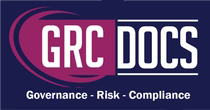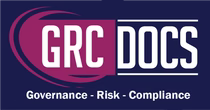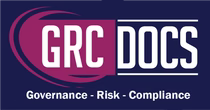SOC 2 Compliance Readiness Toolkit For Startups Your Step-by-Step Guide
Introduction
In today's digital age, ensuring data protection is not just a luxury—it's a necessity. With cyber threats becoming increasingly sophisticated, safeguarding customer data is paramount for any business, especially for startups aiming to make a mark. As startups strive to gain the trust of their customers and partners, achieving SOC 2 compliance becomes a crucial step. This guide will help you understand the importance of SOC 2 compliance and provide a readiness toolkit to prepare your startup for a successful audit. By adhering to SOC 2 standards, startups can not only protect their data but also enhance their reputation in the marketplace.

Understanding SOC 2 Compliance
SOC 2, or System and Organization Controls 2, is a type of audit report that evaluates how a company manages customer data based on five trust service criteria: security, availability, processing integrity, confidentiality, and privacy. These criteria ensure that organizations maintain rigorous standards in handling data, providing assurance to clients and partners. For startups, especially those in the tech industry, SOC 2 compliance is often a requirement to partner with larger companies or to assure customers of their data security practices. As the tech industry continues to grow, so does the emphasis on data protection, making SOC 2 compliance a non-negotiable aspect for startups aiming for scalability and credibility.
Why SOC 2 Compliance Matters
-
Building Trust: SOC 2 compliance demonstrates your commitment to data protection, which builds trust with potential clients and partners. Trust is the cornerstone of any business relationship, and by showcasing your adherence to SOC 2 standards, you position your startup as a reliable partner. In an era where data breaches are common, being SOC 2 compliant can reassure stakeholders of your dedication to safeguarding their information.
-
Competitive Advantage: In a crowded market, having SOC 2 compliance can set your startup apart from competitors who may not have the same level of data security. It acts as a badge of honor, signaling to potential clients that your startup prioritizes their data's safety. As customers become more data-savvy, they are likely to choose partners who can provide assurances of data integrity and protection.
-
Risk Management: The process of becoming SOC 2 compliant helps identify potential vulnerabilities in your systems, allowing you to address them proactively. By conducting a thorough evaluation of your processes and controls, you can mitigate risks before they escalate into significant issues. This not only protects your startup from potential data breaches but also saves costs associated with data loss and reputational damage.
Preparing For A SOC 2 Audit
Achieving SOC 2 compliance involves a thorough audit process. Here's how you can prepare your startup:
1. Understand the Trust Service Criteria
Start by familiarizing yourself with the five trust service criteria:
-
Security: Protecting against unauthorized access. This includes implementing robust access controls and ensuring that your systems are fortified against cyber threats.
-
Availability: Ensuring systems are available for operation and use. System uptime is crucial for maintaining business operations and customer satisfaction, and this criterion assesses your system's reliability.
-
Processing Integrity: System processing is complete, valid, accurate, timely, and authorized. This ensures that your data processing activities are conducted in a manner that is efficient and error-free.
-
Confidentiality: Protecting confidential information. This involves implementing controls to prevent unauthorized access to sensitive data, thereby preserving its confidentiality.
-
Privacy: Proper collection, use, retention, disclosure, and disposal of personal information. This criterion ensures that personal data is handled responsibly and in accordance with privacy regulations.
Understanding these criteria will lay the foundation for your compliance journey, helping you identify key areas that need attention.
2. Conduct a Readiness Assessment
Before undergoing an official SOC 2 audit, perform a readiness assessment to evaluate your current controls and identify gaps. This involves reviewing your policies, procedures, and technologies against the trust service criteria. Consider hiring a consultant who specializes in SOC 2 compliance to assist with this assessment. A readiness assessment acts as a diagnostic tool, providing insights into your current state of compliance and areas requiring improvement. By engaging external experts, you can gain an objective view of your practices and leverage their expertise to strengthen your compliance strategy.
3. Implement Necessary Controls
Based on your readiness assessment, implement the necessary controls to address any identified gaps. This might include:
-
Strengthening access controls to ensure that only authorized personnel have access to sensitive data.
-
Enhancing data encryption practices to protect data both in transit and at rest, adding an extra layer of security.
-
Implementing regular system monitoring and logging to detect and respond to potential security incidents promptly.
-
Developing incident response plans to ensure that your team is prepared to act swiftly in the event of a security breach.
Implementing these controls not only aligns you with SOC 2 requirements but also fortifies your overall security posture.
4. Document Your Processes
Proper documentation is essential for a successful SOC 2 audit. Ensure that all processes related to the trust service criteria are well-documented. This includes policies, procedures, and evidence of control implementations. Documentation serves as proof of compliance and provides auditors with the necessary information to assess your practices. It also acts as a reference for your team, ensuring consistent implementation of security measures across the organization.
Conducting The SOC 2 Audit
Once your startup is ready, it's time to engage a certified public accountant (CPA) firm to conduct the SOC 2 audit. Here's what to expect:
1. Selecting the Right Auditor
Choose an auditor with experience in your industry and a track record of conducting SOC 2 audits. A reputable auditor will provide guidance throughout the process and ensure that your audit is thorough and fair. The right auditor can act as a partner, offering insights and recommendations that enhance your compliance efforts. By selecting an auditor familiar with your industry, you ensure that they understand the unique challenges and requirements you face.
2. The Audit Process
The audit process typically involves:
-
Planning: The auditor will review your documentation and plan the audit approach. This phase sets the stage for the audit, ensuring that the auditor understands your systems and processes.
-
Fieldwork: The auditor will test your controls to ensure they meet the trust service criteria. During this phase, the auditor will interact with your systems, verifying that controls are operating as intended.
-
Reporting: After the fieldwork, the auditor will provide a SOC 2 report detailing the effectiveness of your controls. This report serves as an official record of your compliance status, offering assurance to clients and partners.
The audit process, while rigorous, provides an opportunity for your startup to demonstrate its commitment to data protection and continuous improvement.
3. Addressing Audit Findings
If the auditor identifies any deficiencies, work promptly to address them. This may involve implementing additional controls or improving existing ones. It's important to demonstrate a commitment to continuous improvement in your data protection practices. By promptly addressing audit findings, you show stakeholders that you take data security seriously and are proactive in maintaining compliance. This approach not only enhances your security posture but also strengthens your relationships with clients and partners.
Maintaining SOC 2 Compliance
Achieving SOC 2 compliance is not a one-time effort. It requires ongoing maintenance to ensure continued adherence to the trust service criteria. Here's how to maintain compliance:
-
Continuous Monitoring and Improvement: Regularly monitor your systems and controls to ensure they remain effective. Conduct internal audits and reassess your readiness periodically to identify new risks or areas for improvement. By establishing a culture of continuous monitoring, you can quickly adapt to changes in the threat landscape and maintain a robust security posture. Ongoing assessment and improvement of your controls demonstrate your commitment to protecting data and maintaining compliance.
-
Training and Awareness: Ensure that all employees understand the importance of data protection and their role in maintaining SOC 2 compliance. Regular training and awareness programs can help reinforce this culture of security. By fostering a security-conscious workforce, you empower your employees to act as the first line of defense against potential threats. Regular training ensures that employees are aware of the latest security practices and understand their responsibilities in maintaining compliance.
- Updating Policies and Procedures: As your startup evolves, so will your data protection needs. Regularly review and update your policies and procedures to reflect changes in your business operations or the regulatory landscape. Staying informed about regulatory changes ensures that your compliance efforts remain relevant and effective. By proactively updating your policies, you maintain alignment with SOC 2 requirements and continue to protect sensitive data effectively.
Conclusion
SOC 2 compliance is a vital step for startups looking to establish credibility and trust in the marketplace. By understanding the requirements, conducting a readiness assessment, and implementing necessary controls, your startup can successfully achieve SOC 2 compliance. Remember, maintaining compliance is an ongoing effort that requires commitment and vigilance to protect the data entrusted to you. As the digital landscape evolves, so too must your compliance efforts, ensuring that your startup remains a trusted partner in the eyes of clients and stakeholders. As you embark on your SOC 2 compliance journey, use this readiness toolkit as a guide to navigate the process and build a secure foundation for your startup's future success. By investing in SOC 2 compliance, you're not just meeting a requirement—you're building a culture of security and trust that will serve as the backbone of your startup's growth and reputation.






